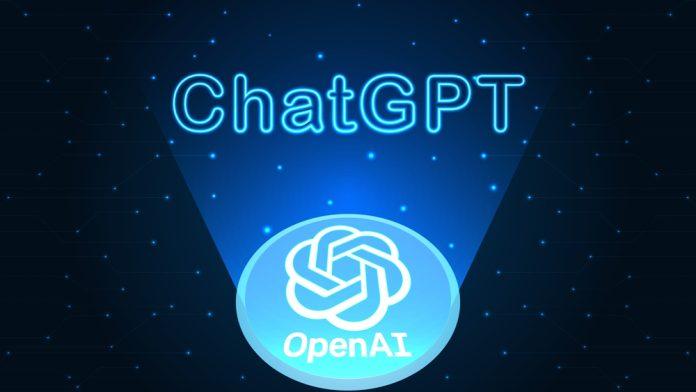Artificial Intelligence (AI) has witnessed remarkable advancements in recent years, and one noteworthy innovation in the realm of conversational AI is ChatGPT. Developed by OpenAI, ChatGPT represents a pinnacle in natural language processing, offering a myriad of applications across various industries. Let’s embark on a journey to explore the evolution, functioning, applications, and implications of ChatGPT in our daily lives.
Evolution of ChatGPT
GPT, or Generative Pre-trained Transformer, serves as the foundation for ChatGPT’s capabilities. Beginning with GPT-1, subsequent iterations like GPT-2 and GPT-3 marked significant strides in understanding and generating human-like text. The latest iteration, GPT-3.5, is the powerhouse behind ChatGPT, enabling more context-aware and nuanced responses.
How ChatGPT Works
At the heart of ChatGPT lies the transformer architecture, a deep learning model designed for sequential data. The training process involves exposing the model to a vast dataset, enabling it to learn patterns and relationships within the data. During interactions, ChatGPT utilizes its contextual understanding to generate coherent and contextually relevant responses.
Use Cases of ChatGPT
ChatGPT finds application in various domains, from assisting in customer support by providing instant responses to aiding in content creation and brainstorming sessions. Its versatility in handling different language tasks positions it as a valuable tool in the AI landscape.
Advantages of Using ChatGPT
The advantages of ChatGPT are manifold. Its ability to process and generate language quickly, coupled with continuous learning, sets it apart. Whether it’s drafting emails, composing code snippets, or engaging in casual conversations, ChatGPT adapts to the user’s needs seamlessly.
Concerns and Limitations
Despite its capabilities, ChatGPT raises ethical concerns. Potential biases in responses and the need for responsible AI development are areas that demand attention. OpenAI is actively working on refining the model to mitigate risks and enhance user trust.
ChatGPT in Business
Businesses are increasingly integrating ChatGPT into their operations. From improving user experience on websites to streamlining communication processes, ChatGPT contributes to efficiency and effectiveness in various industries.
User Interaction and Interface
The user-friendly interface of ChatGPT ensures accessibility for users with different levels of technical expertise. Customization options allow users to tailor the AI’s responses, enhancing the overall user experience and engagement.
Improvements and Future Developments
The world of AI is dynamic, and ChatGPT is no exception. Ongoing research and advancements in natural language processing promise even more sophisticated iterations in the future. The AI community anticipates breakthroughs that could revolutionize the capabilities of ChatGPT.
ChatGPT vs Human Interaction
While ChatGPT excels in many areas, it’s essential to compare its strengths and limitations against human interaction. Instances where AI outperforms humans exist, but human oversight remains crucial to ensure ethical and accurate responses.
Challenges and Solutions
Handling complex queries and addressing ambiguous requests are ongoing challenges. Continuous improvements in the training data and refining the model’s algorithms are strategies employed to enhance ChatGPT’s capabilities.
Public Perception and Acceptance
User feedback and experiences play a vital role in shaping public perception. Building trust in AI technology requires transparency about its capabilities and limitations. Educating the public about the responsible use of AI fosters acceptance and understanding.
Ethical Considerations
Developers of ChatGPT emphasize the importance of responsible AI development. Ensuring fairness, transparency, and adherence to ethical guidelines are paramount. As AI technology evolves, ethical considerations play a central role in shaping its impact on society.
Future Implications of ChatGPT
The widespread integration of ChatGPT raises questions about its implications for job roles, daily life, and societal changes. As AI becomes more ingrained in our lives, understanding and adapting to these changes will be crucial.
Conclusion
In conclusion, ChatGPT represents a transformative force in the field of conversational AI. Its evolution, applications, advantages, and ethical considerations position it as a key player in shaping the future of human-AI interactions. While challenges exist, the potential benefits and advancements herald a promising era of intelligent and context-aware conversations.
Is ChatGPT suitable for all industries?
ChatGPT finds applications in various industries, but its suitability depends on specific use cases and requirements.
How does ChatGPT handle biased responses?
OpenAI is actively addressing biases in ChatGPT’s responses through continuous refinement and improvements.
Can ChatGPT be customized for specific tasks?
Yes, ChatGPT allows customization, enabling users to tailor its responses to specific tasks or preferences.
What measures are in place to ensure ethical AI development?
Developers emphasize responsible AI development, including transparency, fairness, and adherence to ethical guidelines.
How does ChatGPT contribute to user engagement in business applications?
ChatGPT enhances user engagement by providing quick and relevant responses, improving overall user experience.
